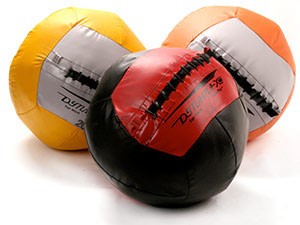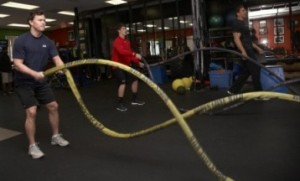Fitness: Anytime, Anywhere for Anyone on the Autism Spectrum
August 01, 2012
By: Eric Chessen, MS
Categories: Self-Advocates
Eric Chessen, M.S., is the founder of Autism Fitness. nexercise physiologist with an extensive background in applied behavior analysis, Chessen has been developing and implementing successful fitness programs for people with autism spectrum disorders (ASD) for more than a decade. He provides seminars and staff development across the United States and consults with parents and organizations around the world.
For years disregarded, misunderstood, and ignored, it is now spectacularly clear that regular physical activity and play have demonstrable benefits for people with ASD. In my practice, I tend to consult with two categories of special education programs:
The term “adapted PE” is often used when referring to physical activity programs for students on the autism spectrum, but all physical education is adapted, or should be adapted, to individual abilities. I have yet to meet a class of students on the spectrum who all have the same physical, adaptive, and cognitive skills. In a class of 10, three or four may have age-appropriate physical skills, two or three might have light motor impairments, and the rest are likely functioning low enough on the adaptive or behavioral level that it is difficult to figure out exactly what they can and cannot do.
A typical adapted PE class features a soccer ball or kickball on the floor, one or two students attempting to participate, and the rest of the class in various states of wandering or avoiding the activity.
Because that is too often the scenario, I usually recommend a movement-based program, focusing on developing general fitness skills (squat, push, pull, locomotion) and play. What makes this a good way to go? These types of programs are open to individualization and developing abilities that generalize or “cross over” very well into life skill situations.
While I designed these protocols for the classroom or school gym, there is no reason why they cannot be performed in the home as well. I’ve had the opportunity to meet some active and proactive parents who have implemented fitness programs for their children/adolescents/teens with ASD. When done in school, it becomes a great routine; when done at home, it becomes a lifestyle.
I use five pieces of equipment in my programs. I apply these guidelines to the equipment I use in my programs:
Because many of these exercises may be new to you, I put up plenty of videos on my blog (EricChessen.com) and on AutismFitness.com. Having a good working knowledge of the exercises will help to teach them correctly, efficiently, and safely. All of the exercises can be progressed or regressed (made more or less challenging) based on the ability levels (physical, adaptive, and cognitive) of the individual. Focus on including each of the four movement patterns:

Medicine Balls
Some of my go-to medicine ball activities include:
Swinging Ropes
You need some space for ropes, but they cost a tenth of the price of a treadmill, provide a far better cardiovascular effect, and can be used by individuals with any level of ability. Right now, Art of Strength makes my favorite ropes. They come in a variety of “jacket colors” and last a long time without wearing down. Take that, elliptical machine!

My go-to exercises for the ropes include:
Sandbells
Sandbells are a cross between a medicine ball and a sandbag. They are outstanding for developing grip strength (a particular issue for many young people with ASD) and provide a safe alternative to dumbbells.
My go-to exercises for sandbells include:
Sandbags
Sandbags are great when a little more weight than sandbells provide is needed. I find that anything over 15 pounds makes the sandbells a little difficult to grab. Fitness sandbags solve that issue with many, many handles and can be loaded with almost 100 pounds. Some of my older and stronger athletes with autism who have progressed in their physical development to being stronger are more powerful, are up to the challenge of more weight.
My go-to sandbag exercises include:
The Human Body
Body weight exercises are included in all of my athletes’ programs. Animal-style movements are ideal for groups and can be quite creative in nature (no pun intended).
My go-to body weight exercises include:
Because physical, adaptive, and cognitive skills vary so widely among those with autism, it is important to introduce fitness programs at the pace of and ability level of the individual. Consulting with a fitness professional who is qualified to work with people who have special needs before starting a program is always a good idea.
Rather than beginning with a full 45 to 60 minute exercise “session,” I recommend that parents and educators start with two- to five-minute mini-sessions throughout the day. These short intervals help to introduce new activities without being overwhelming while still providing enough exposure time for new skills to develop.
Putting two or three pieces of equipment (spot markers, Sandbells, medicine ball) on the floor and seeing if one has more appeal than another can be a big help. It can provide insight into potentially reinforcing/fun activities. Starting off with something that seems enjoyable can certainly speed up the fitness-as-lifestyle process.
Individuals with autism deserve great fitness programs for a more active, more optimal now and beyond.